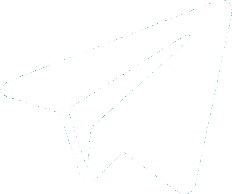Project Description
Introduction:
The Persian Gulf and Oman Sea are one of the marine mammals’ settlements in the world. This region has many unique qualities in comparison to the world’s other aquatic environments. Iran, with 2050km coastline line in the Persian Gulf, and 637 km in Oman Sea, has the widest coastal line in north of the Persian Gulf. Currently 120 species of marine mammals are recognized, 86 of them are whales in 14 families. Given the fact that there has not been enough research on marine mammals in this region, there are many different statistics on this issue. In 2010 MS Gill Brolik and her colleagues published an article based on the evidence of stranded species in Iran. According to this article Indo pacific Humpback Dolphin, Indo pacific Bottlenose dolphin, Risso’s dolphin, Spinner dolphin, Rough toothed dolphin, Striped dolphin, Finless porpoise, False killer whale, Sperm whale, Bryde’s whale, Fin whale, Humpback whale, Blue whale, Dugong have been reported for Iran. However, there still isn’t enough information on these species and their spread.
After 2 strandings on Jask coast, in 2006, 152 dolphins died; therefor the Authorities began to pay attention to the marine mammals’ death issue in this region. Crashing into boats and ships and factors such as getting caught in fishermen’s net, are some of the most important threats to marine mammals in Iran.
Following the idea of an old colleague in a Canadian institute, Plan for the land society started a project under the name ‘conservation of marine mammals in the Persian gulf and Oman Sea in 2008. This project was piloted in Qeshm Island in 2008 with MCAF’s financial support. And in the fall of 2009, creating the national network for marine mammals’ rescue was mentioned in the official rulebook. Given its experience and expertise, Plan for the land started its work as the performer of this program for raising awareness and sensitivity in local communities on this issue.
The purpose of this project is research and conservation of marine mammals’ species in the Persian Gulf and Oman Sea and its objective is to use scientific research and methods to determine the condition of Iran’s southern marine mammals and finally to provide practical solutions for local communities for long term conservative plans.
Objectives:
Identifying the existing species in south of Iran.
Raising awareness and sensitivity on marine mammals in the Persian Gulf and Oman Sea for their conservation.
Empowerment of local communities for conservation of marine mammals.
Research on the condition of these species.
Identifying the threats and providing suitable solutions.
Raising national academic knowledge on the issue by inviting international experts and professors, holding various conferences and workshops.
Raising the local communities’ awareness by providing brochures, books, leaflets, posters and educational handouts.
Achievements:
Creating the experimental stranding network for marine mammals in Qeshm Island – 2008
Creating the national network for conservation, rescue and saving of marine mammals of the Persian Gulf and Oman Sea – 2009- 2010
Cooperation with PWHF (Parsian Wildlife Heritage Foundation) and Avaye Tabiat Paydar institute in the project of organizing the dolphins’ inspection in Hengam island- the Persian Gulf – 2010
Cooperation for the master’s thesis ‘genetics structure survey and determining the phylogenic tree of stranded dolphins in the Persian Gulf and Oman sea’ – 2009- 2010
Cooperation with Shahid Beheshti University for continuing the research on genetic structure of stranded marine mammals in south of Iran –2012- 2014
Cooperative management in natural resources for conservation of Hara marine forest in Qeshm Island and reducing the threats for marine mammals in this settlement – 2011 delayed






